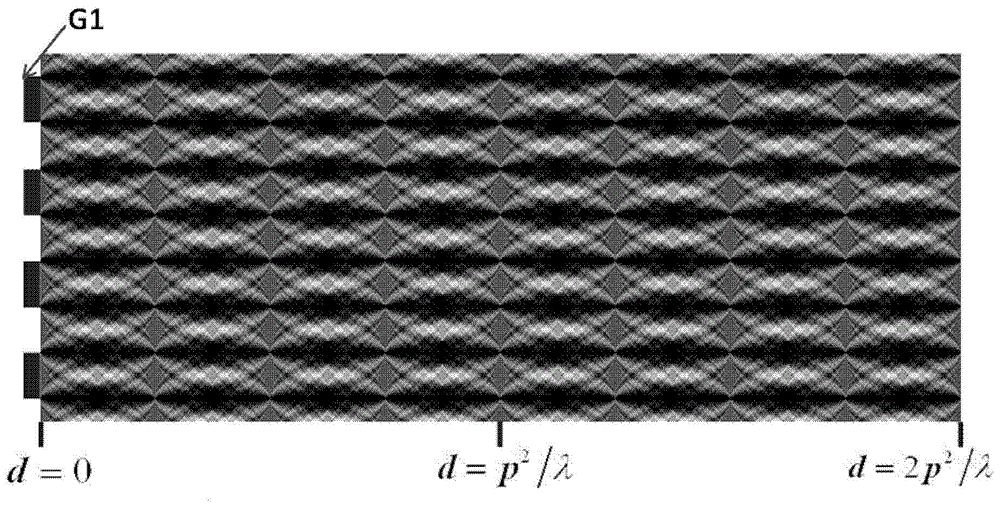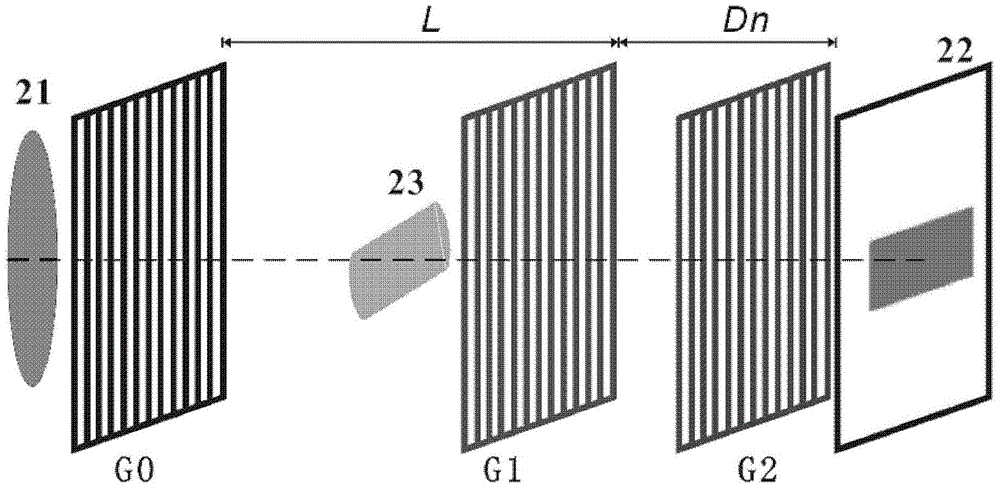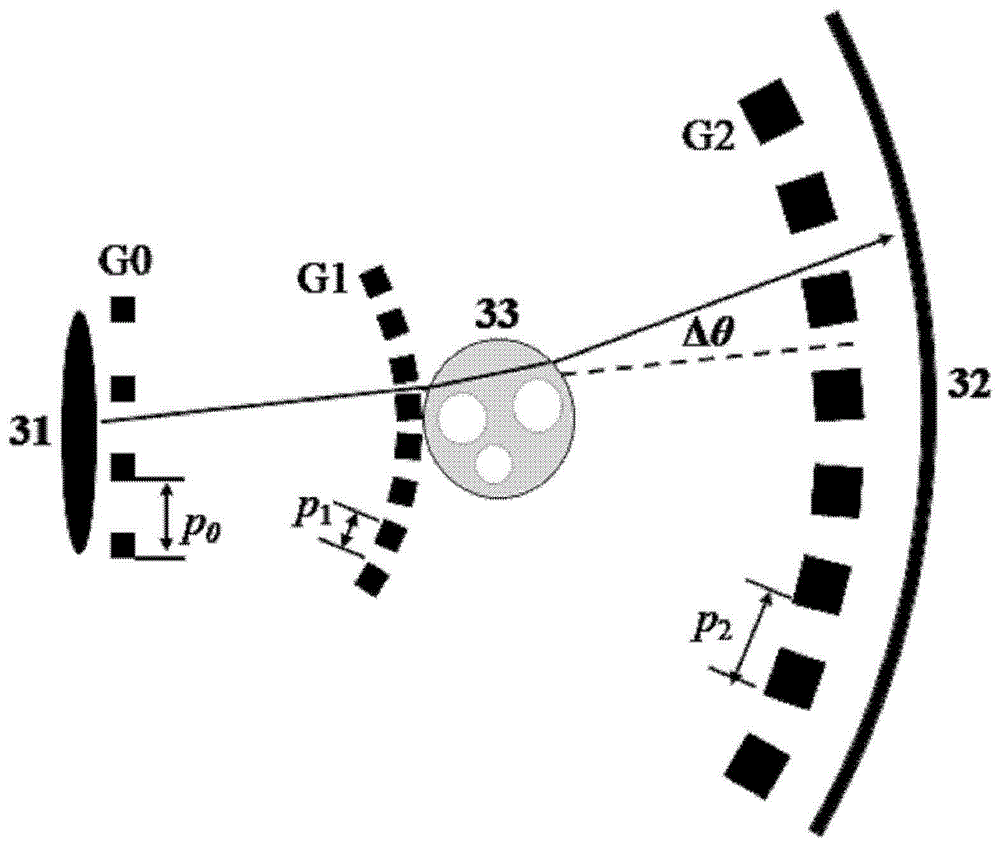X-ray grating phase-contrast imaging device and method
A phase-contrast imaging and X-ray technology, which is applied in the fields of public security inspection, medical imaging, and non-destructive testing, can solve problems such as the inability to achieve high energy, and achieve large-field phase-contrast imaging, low radiation dose, and high image contrast. degree of effect
- Summary
- Abstract
- Description
- Claims
- Application Information
AI Technical Summary
Problems solved by technology
Method used
Image
Examples
no. 1 example
[0060] image 3 It is a schematic diagram of the X-ray grating phase contrast imaging device of the first embodiment and the second embodiment of the present invention. As shown in the figure, the X-ray grating phase contrast imaging device of the present invention includes an X-ray source 31 , a source grating G0 , a beam splitting grating G1 , an analysis grating G2 and a detector 32 . Wherein, the source grating G0 , the beam splitting grating G1 , the analysis grating G2 and the detector 32 are sequentially arranged on the X-ray propagation path of the X-ray source 31 .
[0061] The imaging principle of the present invention is based on the geometric projection fringe mechanism of the X-ray absorption grating,
[0062] In essence, it is based on the principles of geometric optics, not wave optics. Such as image 3 As shown, the incident X-ray illuminates the beam-splitting grating G1, and in the subsequent geometric projection area, the light intensity distribution appe...
no. 2 example
[0078] The second embodiment of the present invention adopts the same X-ray grating phase contrast imaging device and method as the first embodiment, the difference is that, according to the second embodiment of the present invention, in order to obtain the same information as traditional absorption contrast imaging For the image of the noise ratio, the radiation dose of the X light source 31 of the phase contrast imaging device of the present invention is 20% of the traditional absorption contrast imaging, that is, the radiation dose received by the object is 10% to 20% of the traditional absorption contrast imaging.
[0079] The radiation dose to an object is directly related to the signal-to-noise ratio of the imaging method. One of the advantages of the hard X-ray phase contrast imaging method compared with the traditional absorption contrast imaging method is the improvement of the signal-to-noise ratio of the object image. The signal-to-noise ratio of the object image sa...
no. 3 example
[0088] Figure 4 A third embodiment of the invention is shown. The X-ray grating phase contrast imaging device and method proposed by the present invention are not only applicable to one-dimensional situations, but also can be extended to two-dimensional situations. Such as Figure 4 As shown, on the basis of the first embodiment, both the beam splitting grating G1 and the analysis grating G2 are two-dimensional absorption gratings. The beam-splitting grating G1 and the analysis grating G2 can be obtained by direct fabrication, or by a combination of one-dimensional absorption gratings.
[0089] Similar to the case of the same dimension, the object is placed close to the beam splitting grating G1 to reduce the radiation dose. The refraction and scattering of the X-ray by the object causes the disturbance of the two-dimensional light intensity array in the x and y directions. By analyzing these disturbances, the absorption of the object, the refraction in the x direction, th...
PUM
 Login to View More
Login to View More Abstract
Description
Claims
Application Information
 Login to View More
Login to View More - R&D
- Intellectual Property
- Life Sciences
- Materials
- Tech Scout
- Unparalleled Data Quality
- Higher Quality Content
- 60% Fewer Hallucinations
Browse by: Latest US Patents, China's latest patents, Technical Efficacy Thesaurus, Application Domain, Technology Topic, Popular Technical Reports.
© 2025 PatSnap. All rights reserved.Legal|Privacy policy|Modern Slavery Act Transparency Statement|Sitemap|About US| Contact US: help@patsnap.com



